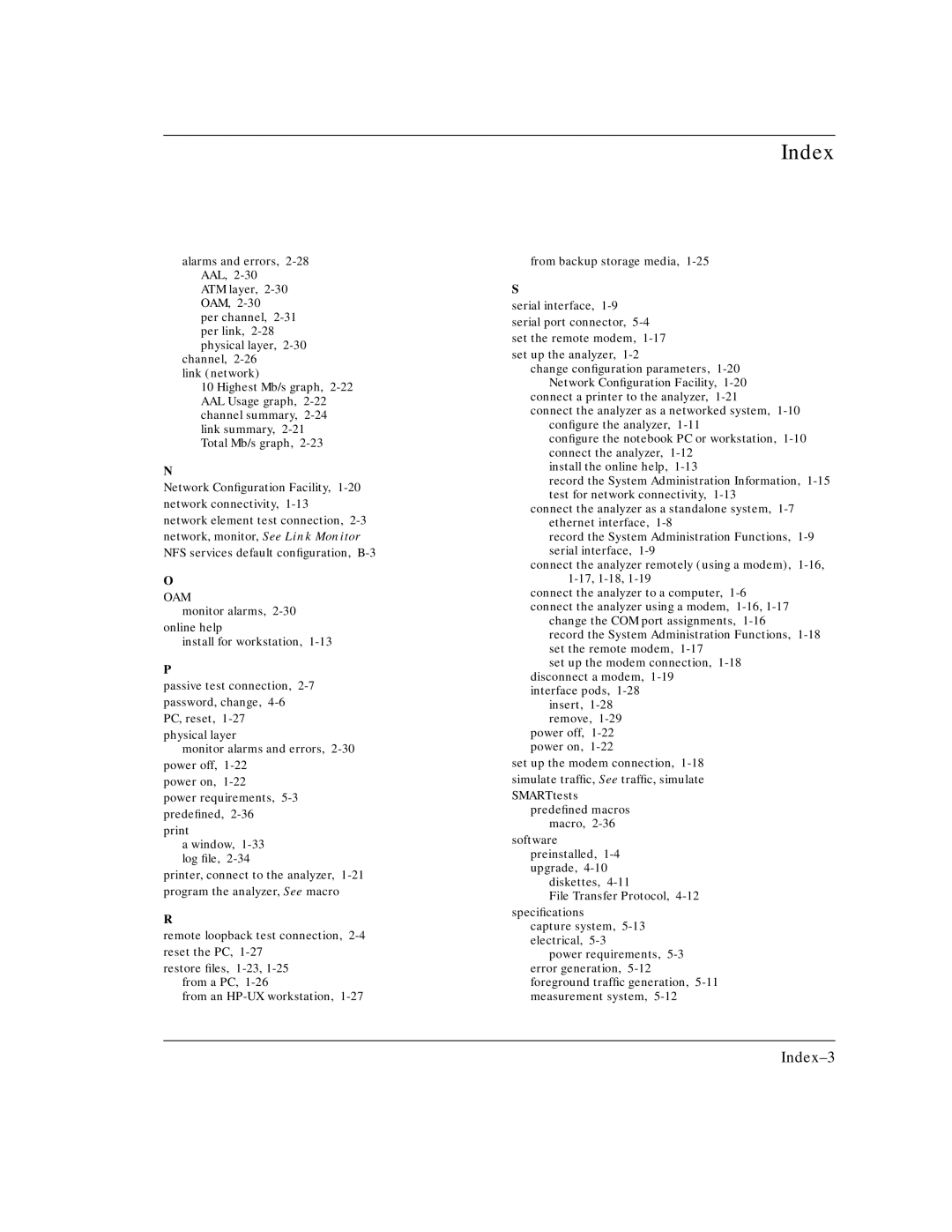alarms and errors, 2-28 AAL, 2-30
ATM layer, 2-30 OAM, 2-30
per channel, 2-31 per link, 2-28 physical layer, 2-30
channel, 2-26 link (network)
10 Highest Mb/s graph, 2-22 AAL Usage graph, 2-22 channel summary, 2-24 link summary, 2-21
Total Mb/s graph, 2-23
N
Network Configuration Facility, 1-20 network connectivity, 1-13 network element test connection, 2-3 network, monitor, See Link Monitor NFS services default configuration, B-3
O
OAM
monitor alarms, 2-30 online help
install for workstation, 1-13
P
passive test connection, 2-7 password, change, 4-6 PC, reset, 1-27
physical layer
monitor alarms and errors, 2-30 power off, 1-22
power on, 1-22
power requirements, 5-3 predefined, 2-36
print
a window, 1-33 log file, 2-34
printer, connect to the analyzer, 1-21 program the analyzer, See macro
R
remote loopback test connection, 2-4 reset the PC, 1-27
restore files, 1-23, 1-25 from a PC, 1-26
from an HP-UX workstation, 1-27
Index
from backup storage media, 1-25
S
serial interface, 1-9 serial port connector, 5-4 set the remote modem, 1-17 set up the analyzer, 1-2
change configuration parameters, 1-20 Network Configuration Facility, 1-20
connect a printer to the analyzer, 1-21
connect the analyzer as a networked system, 1-10 configure the analyzer, 1-11
configure the notebook PC or workstation, 1-10 connect the analyzer, 1-12
install the online help, 1-13
record the System Administration Information, 1-15 test for network connectivity, 1-13
connect the analyzer as a standalone system, 1-7 ethernet interface, 1-8
record the System Administration Functions, 1-9 serial interface, 1-9
connect the analyzer remotely (using a modem), 1-16, 1-17, 1-18, 1-19
connect the analyzer to a computer, 1-6 connect the analyzer using a modem, 1-16, 1-17
change the COM port assignments, 1-16
record the System Administration Functions, 1-18 set the remote modem, 1-17
set up the modem connection, 1-18 disconnect a modem, 1-19
interface pods, 1-28 insert, 1-28 remove, 1-29
power off, 1-22 power on, 1-22
set up the modem connection, 1-18 simulate traffic, See traffic, simulate SMARTtests
predefined macros macro, 2-36
software preinstalled, 1-4 upgrade, 4-10
diskettes, 4-11
File Transfer Protocol, 4-12 specifications
capture system, 5-13 electrical, 5-3
power requirements, 5-3 error generation, 5-12 foreground traffic generation, 5-11 measurement system, 5-12

